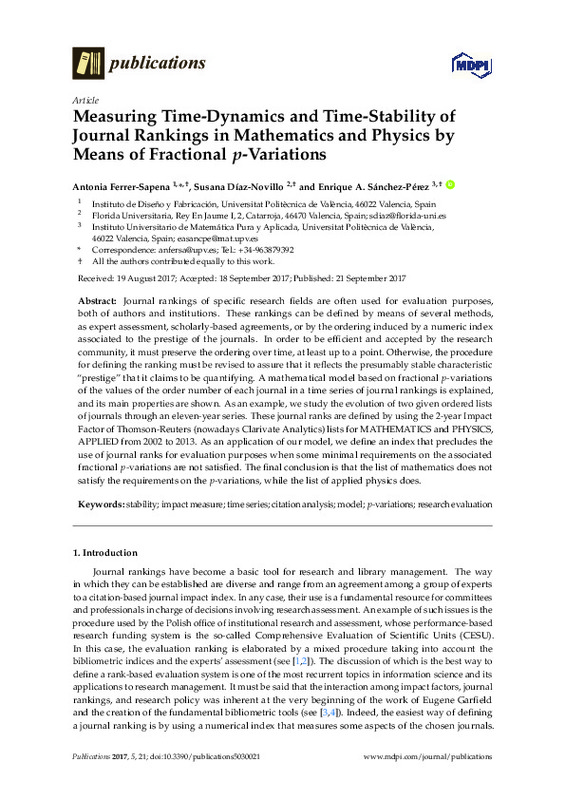JavaScript is disabled for your browser. Some features of this site may not work without it.
Buscar en RiuNet
Listar
Mi cuenta
Estadísticas
Ayuda RiuNet
Admin. UPV
Measuring Time-Dynamics and Time-Stability of Journal Rankings in Mathematics and Physics by Means of Fractional p-Variations
Mostrar el registro completo del ítem
Ferrer Sapena, A.; Díaz Novillo, S.; Sánchez Pérez, EA. (2017). Measuring Time-Dynamics and Time-Stability of Journal Rankings in Mathematics and Physics by Means of Fractional p-Variations. Publications. 5(3):1-14. https://doi.org/10.3390/publications5030021
Por favor, use este identificador para citar o enlazar este ítem: http://hdl.handle.net/10251/107426
Ficheros en el ítem
Metadatos del ítem
| Título: | Measuring Time-Dynamics and Time-Stability of Journal Rankings in Mathematics and Physics by Means of Fractional p-Variations | |
| Autor: | Díaz Novillo, Susana | |
| Entidad UPV: |
|
|
| Fecha difusión: |
|
|
| Resumen: |
[EN] Journal rankings of specific research fields are often used for evaluation purposes, both of authors and institutions. These rankings can be defined by means of several methods, as expert assessment, scholarly-based ...[+]
|
|
| Palabras clave: |
|
|
| Derechos de uso: | Reconocimiento (by) | |
| Fuente: |
|
|
| DOI: |
|
|
| Editorial: |
|
|
| Versión del editor: | http://doi.org/10.3390/publications5030021 | |
| Código del Proyecto: |
|
|
| Agradecimientos: |
The work of the first author was supported by Ministerio de Economi, Industria y Competitividad, Spain, under Research Grant CSO2015-65594-C2-1R Y 2R (MINECO/FEDER, UE). The work of the third author was supported by ...[+]
|
|
| Tipo: |
|









